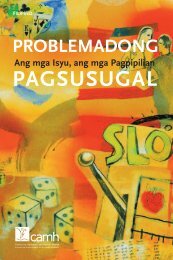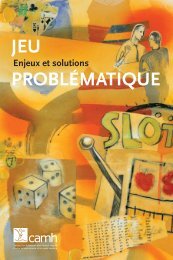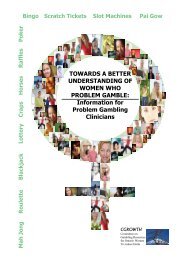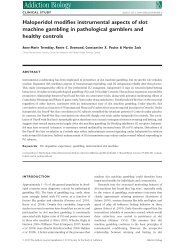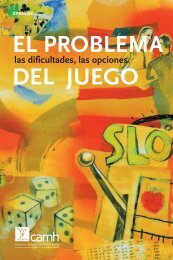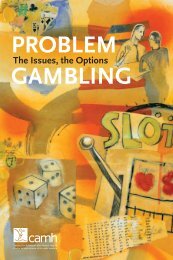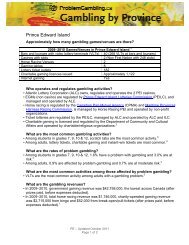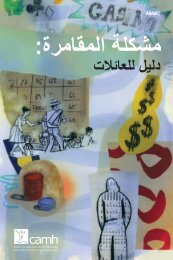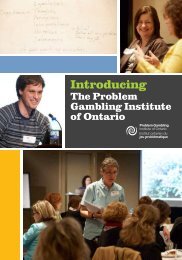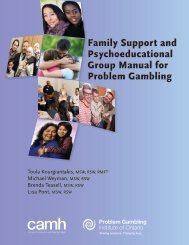Youth Making Choices: Gambling Prevention Program
Youth Making Choices: Gambling Prevention Program
Youth Making Choices: Gambling Prevention Program
You also want an ePaper? Increase the reach of your titles
YUMPU automatically turns print PDFs into web optimized ePapers that Google loves.
Unit 3: ProbabilityLesson PlanMinds On> Establishing a positive learning environment> Connecting to prior learning and/or experiences> Setting the context for learningSmall Groups• Students are provided with a chart having three sections: “I see,”“I think,” “And so.” Brainstorm a list of “I see” statements to a pictureof a gambling scene.• Students then answer the statement “I think,” completing that chartsection (What do you think is happening in the story? What does theevidence tell you?).• Students then complete the “And so” section of the chart (I conclude…,I think that…).Whole Class Debrief• Teacher directs the discussion to review inferences and pros and cons ofstatements made in the activity.ConnectionsL: LiteracyML: MathematicalLiteracyAfL, AoL: Assessmentfor/of LearningSC: Skill ContinuaAfL: ChartAfL: AnecdotalCommentsAction> Introducing new learning or extending/reinforcing prior learning> Providing opportunities for practice and application of learning (guided > independent)Individual• Working independently, students complete the activity in StudentResource 1: Lottery Scenario, which talks about a specific lottery situation.Whole Class Debrief• Teacher directs discussion to ensure that after this exercise studentsunderstand probability, average and guarantee.AfL: SchematicPresentations or Charts,ReflectionsAfL: AnecdotalCommentsAdditional information to help in the discussion:– Question 3: It is possible that a person could win every week for ayear. The chances are (1/4) to the power of 52 = 1 chance in 20,282,409,603,651,700,000,000,000,000,000. It is so incredibly unlikely thatit is virtually impossible. Nonetheless, although extremely unlikely itis possible.– Question 4: It is possible that person could lose every single draw fora year. The chances of losing are (3/4) to the power of 52 = 1 chance in3,139,166. This means that losing every single draw is also very unlikely;but much less unlikely that winning every draw.It is important to understand the difference between something that isimpossible, something virtually impossible (e.g., winning every bet for ayear) and something that is very unlikely (e.g., losing every bet for a year).<strong>Youth</strong> <strong>Making</strong> <strong>Choices</strong>: <strong>Gambling</strong> <strong>Prevention</strong> <strong>Program</strong>www.Problem<strong>Gambling</strong>.ca3.4




